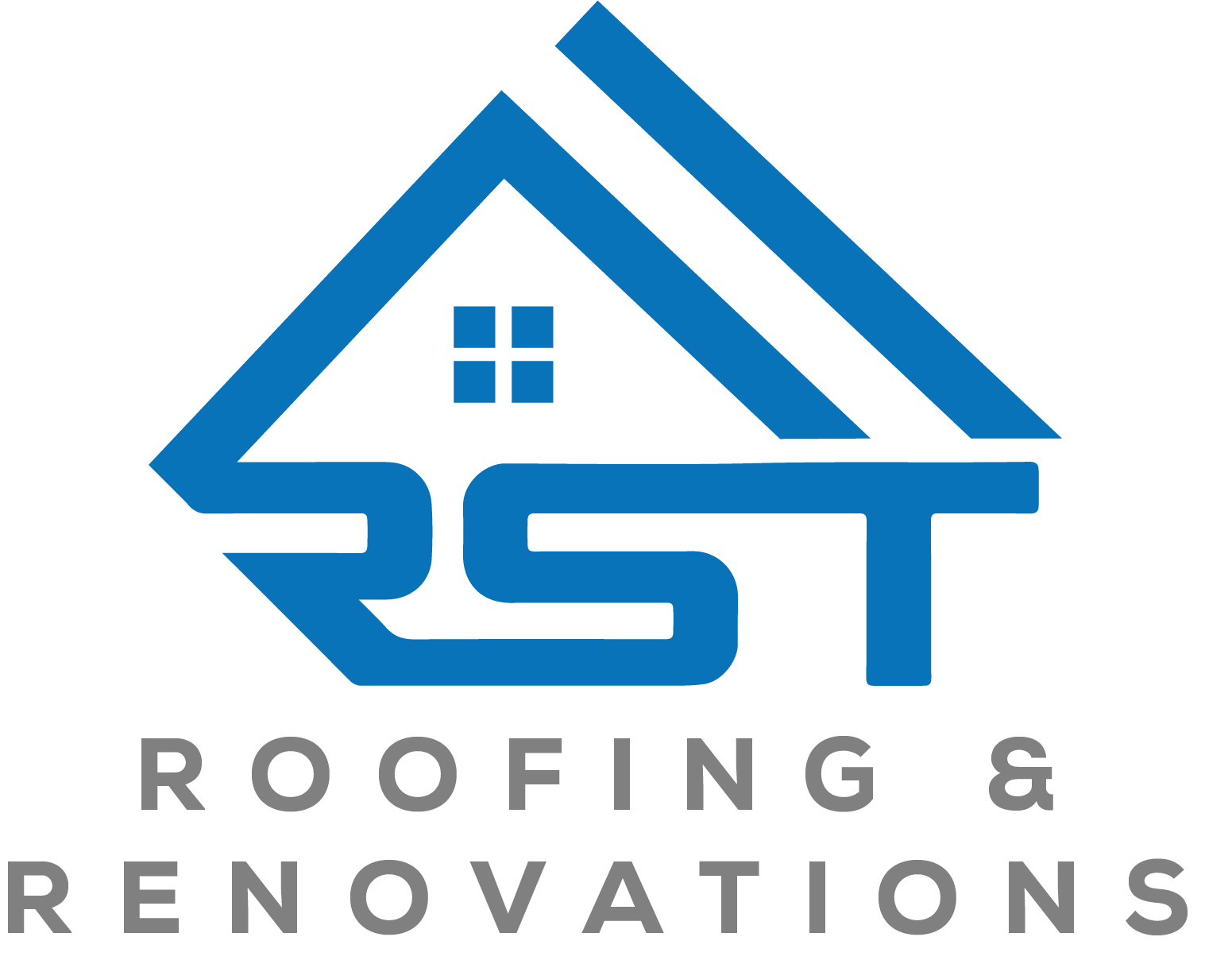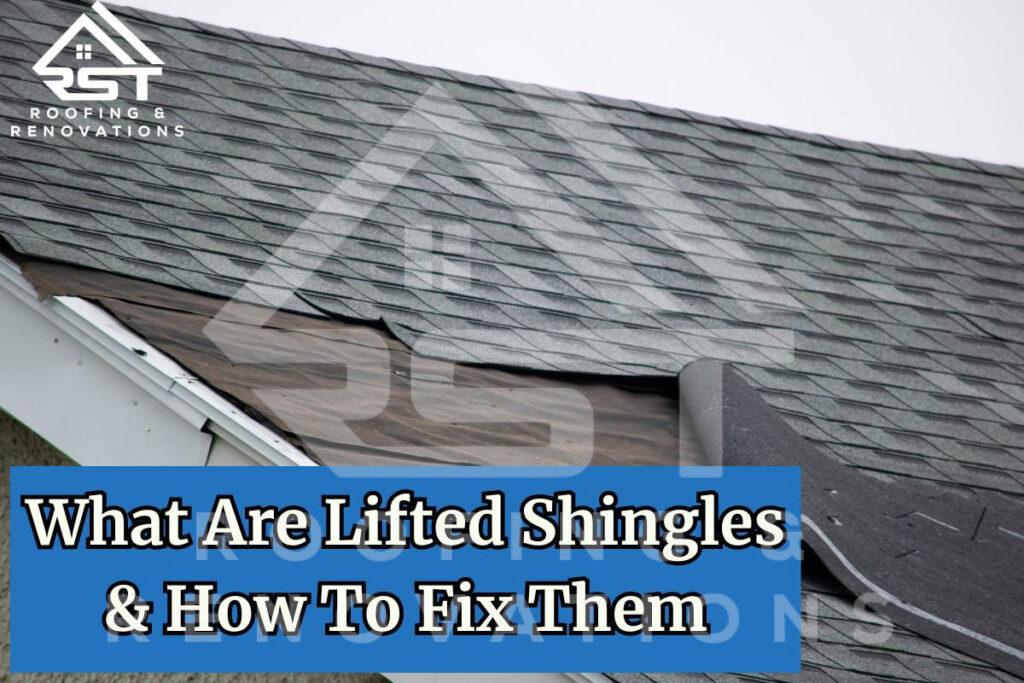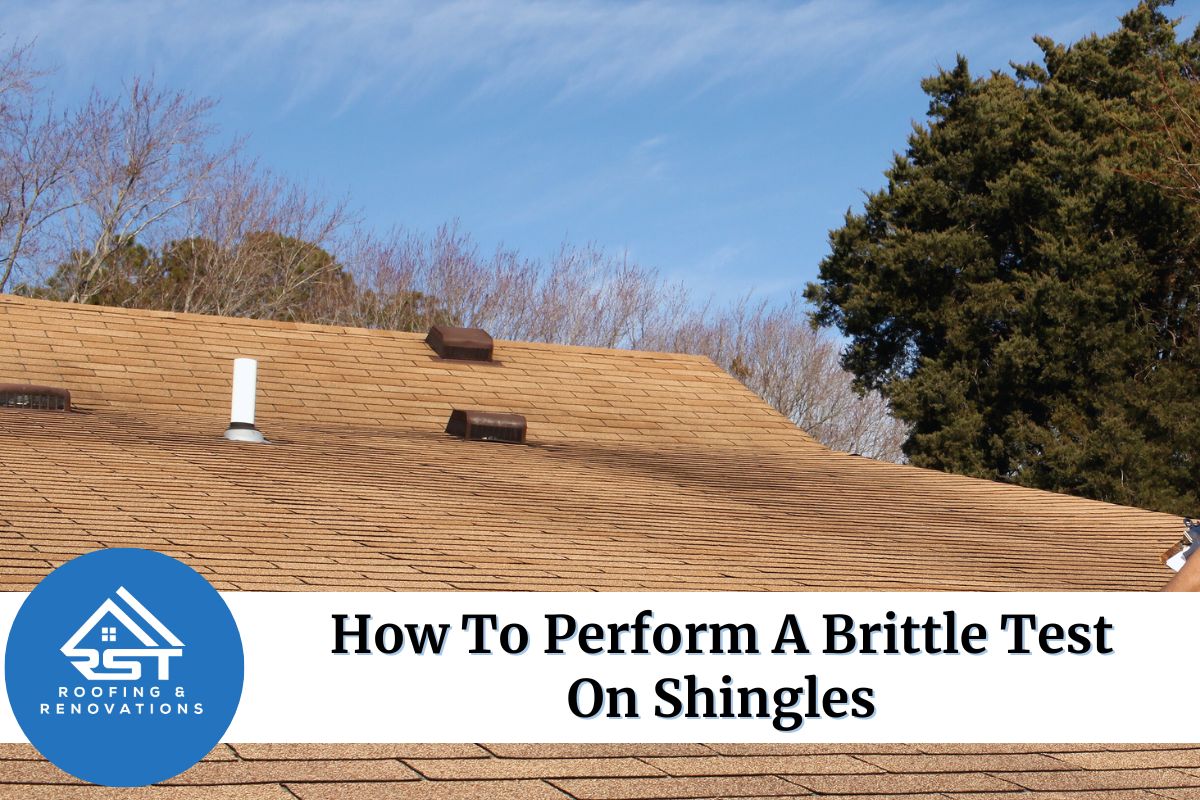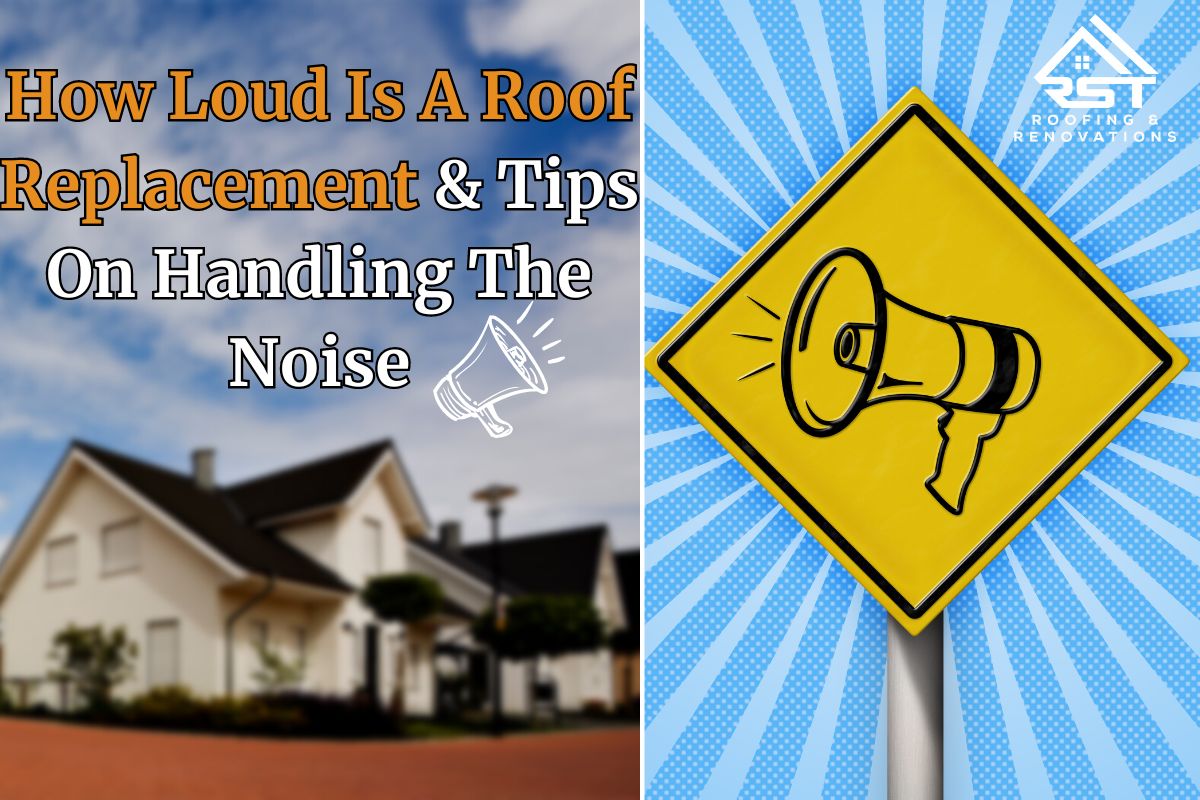Shingles that are lifting up, or starting to rise, is one of the most common roofing issues homeowners face. This is known as shingle uplift and while it may seem like a minor problem at first, lifted shingles can lead to more severe damage if left unaddressed. In this comprehensive blog post, we’ll explore what lifted shingles are and their potential causes, providing step-by-step instructions on how to fix lifted shingles effectively.
What Are Lifted Shingles?
Lifted shingles, also known as raised or cupped shingles, are roofing shingles that have become detached or started to lift up from the surface of the roof. This condition can occur on both asphalt and wood shingles, and it’s essential to address it correctly to prevent any further deterioration and potential leaks.
If they’re left unaddressed, lifted shingles can allow water to seep underneath, leading the roof deck to rot and potential interior water damage. Additionally, lifted shingles can act as an entry point for pests, debris, and moisture, exacerbating the issue and compromising the structural integrity of your roof. Promptly addressing lifted shingles is crucial to maintain the lifespan of your roofing system and avoid expensive repairs or replacements down the line.
The Causes of Lifted Shingles
There are several potential causes for a shingle lift, including:
- Improper Installation: Installation is a very significant part of whether or not your roofing materials will function properly, and improper installation of your shingles can result in lifted shingles over time.
- Age and Weathering: As shingles age, they can become brittle and lose their flexibility, making them more prone to shingle lift, especially in regions with extreme weather fluctuations or high winds.
- Moisture and Leaks: Water infiltration, either from leaks or condensation buildup, can cause the shingles to swell and lift, leading to further moisture damage and potential mold growth.
- Attic Ventilation Issues: Inadequate attic ventilation can lead to excessive heat buildup, causing shingles to curl or lift due to the intense heat.
- Wind Damage: High winds can catch the edges of shingles and cause shingle lift, especially if they were already loosened or improperly installed.
- Manufacturing Defects: In rare cases, manufacturing defects in the shingles themselves can contribute to their premature lifting or deterioration.
Fixing Lifted Shingles: A Step-by-Step Guide
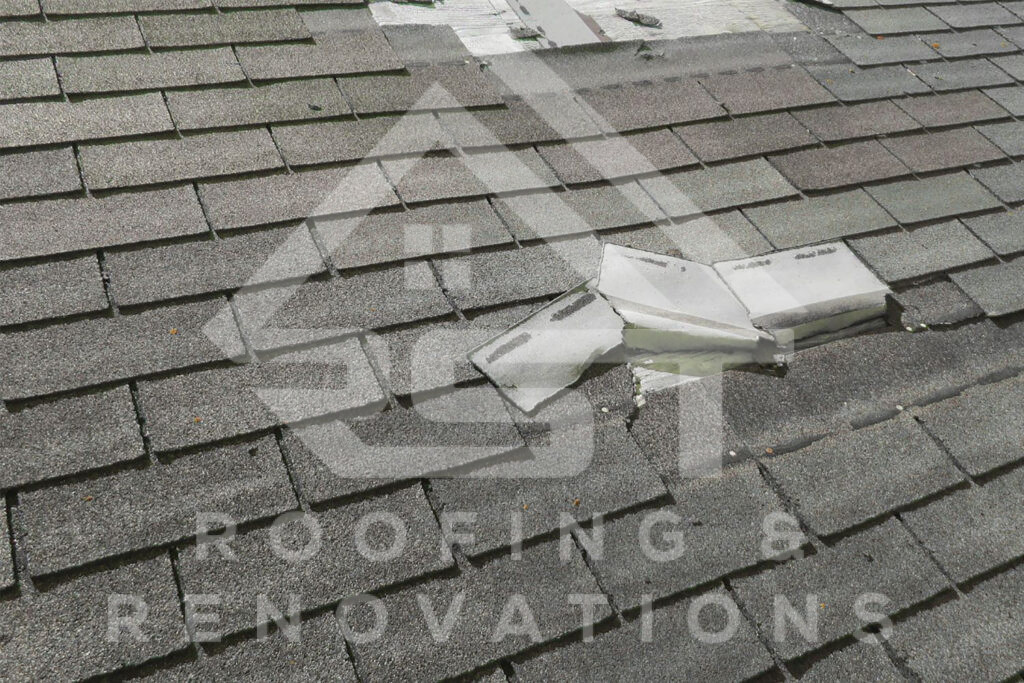
If you notice one or two lifted shingles on your roof, it may be feasible to replace the individual shingles. However, if more than 25% of the shingles on your roof are compromised, you may want to consider a full roof replacement.
Step 1: Prepare the Work Area
Start by ensuring you have a safe and stable work area. You may need a ladder lift or shingle ladder lift to access the roof safely. Clear the area around the lifted shingles to ensure you have enough space to work.
Step 2: Inspect and Assess the Damage
Once you’re on the roof, carefully inspect the lifted shingles and the surrounding area. Check for any signs of water damage or other underlying issues that may have contributed to the problem. This will help you determine the amount and type of repairs you’ll need.
Step 3: Remove The Lifted Shingles
Using a flat pry bar or a shingle removal tool, gently lift up the affected shingles and any surrounding ones that may have been compromised. Be careful not to damage surrounding shingles that are in good condition while doing this.
Step 4: Prepare the Surface
Clean the area thoroughly, removing debris, old nails, and dust. Also, check that the underlayment is in good condition. If not, then you may need to have it replaced as well.
Step 5: Replace The Shingles
Apply roofing adhesive to the back of the new shingles before positioning them in place. Make sure they align with the surrounding shingles and secure them with roofing nails.
Step 6: Seal Edges
Once the shingles are in place, use a high-quality roofing sealant or cement to seal the edges and any gaps or spaces between the shingles. This will help prevent water infiltration and ensure a watertight seal.
Step 7: Inspect and Clean Up
After completing the repair, carefully inspect the area to ensure all shingles are secured in place and properly sealed. Clean up any debris or materials left behind and dispose of them properly.
Additional Tips for Fixing Lifted Shingles
Addressing lifted shingles instantly is crucial for maintaining the integrity, look, and longevity of your roof. Here are some additional tips that can help you!
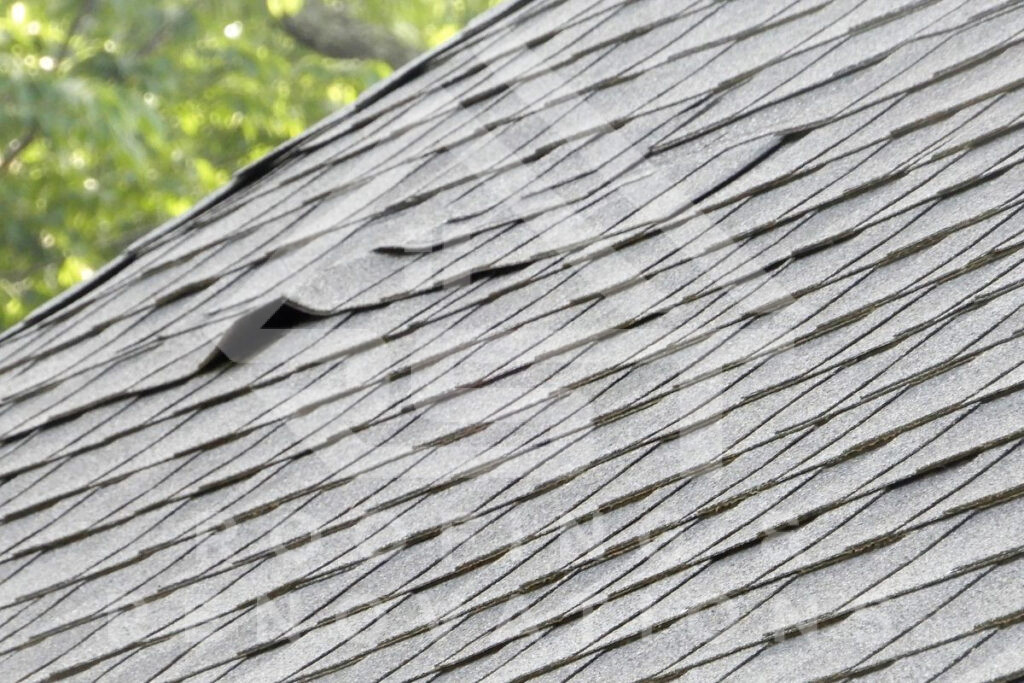
1. Address the Underlying Cause
While fixing the shingles is essential, it’s also important to tackle the actual cause that is leading to shingles lifting up in the first place. If the issue is related to poor attic ventilation, consider installing additional vents or improving the existing ventilation system. If the cause is age or weathering, you may need to consider a full roof replacement in the near future.
2. Hire A Professional
For more extensive or complicated repairs, or if you’re uncomfortable working on a roof, it’s always wise to hire a professional roofing contractor. They can help you identify the cause with a proper inspection.
3. Practice Preventative Maintenance
To help prevent future issues related to shingle uplift, it’s essential to perform regular roof inspections and maintenance. This includes cleaning gutters, trimming overhanging branches, and addressing any potential problems promptly.
4. Consider Impact-Resistant Shingles
If you live in an area that faces high winds or severe climatic conditions, you may want to consider installing impact-resistant shingles during your next roof replacement. These shingles are designed to withstand extreme conditions and are less likely to lift up or become damaged.
5. Check Your Insurance
If the shingles have curled or lifted due to any natural disaster like a wind storm, hail storm, or heavy rainfall, then you can file a claim with your insurance for the expenses. However, if the reason is improper care and maintenance, then you are not eligible to claim your insurance. Depending on the type and level of the damage, your homeowner’s insurance may occasionally pay for the price of replacing your entire roof or fixing damaged shingles.
Should You Fix Lifted Shingles On Your Own?
Yes, you can try fixing lifted shingles yourself if you have the proper know-how, safety gear, and tools. However, it’s best to get professional help if the damaged area is large or you don’t have much roofing experience.
Tackling a big roofing job without the right skills and equipment can result in further damage or even safety risks. Professional roofers are trained experts who have all the specialized tools and follow proper safety practices for the job.
They can accurately figure out what’s causing the shingles to lift up and recommend if you need just a repair or a full roof replacement. Professionals also already have the right safety gear, like harnesses, to work securely on roofs.
While a DIY shingle repair may seem cheaper at first, attempting a complex repair without know-how can end up costing you more in terms of mistakes or voiding warranties. In the long run, hiring a reputable roofer saves time, money, and hassle down the road.
Call Us For A Roof Replacement or Shingle Installation In Atlanta
If you’re looking for a roof installation, repair, or replacement in Atlanta, we are here to assist you. No matter if it’s commercial or residential, or whether it’s a small or large size project, our team of expert professionals is here to address your roof related concerns. Get in touch with our roofing experts to get a free consultation by calling us at (404) 548-8901!


